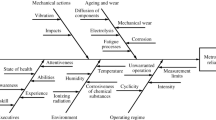Abstract
The Oxygen Bomb Method as evolved by the studies presented in this paper gives production and quality control laboratories a procedure by which to measure a fifty-hour shortening in one hour and forty-five minutes. The OBM is twice as precise as in the Active Oxygen Method as shown by the comparison of their two sigma error.
Similar content being viewed by others
References
Official and Tentative Methods of The American Oil Chemists’ Society 1959 Revision, Tentative Method CD 12–15.
Gehart, W. M., B. N. Stuckey and J. J. Austin, JAOCS34, 427 (1957).
Stuckey, B. N., E. R. Sherwin and T. D. Hannah, Jr., JAOCS85, 581 (1958).
Beasley, R. W., and R. L. Sampson, “Modification of the Oxygen Bomb Stability Technique,” presented at the May 4, 1960, Cereal Chemists’ Meeting, Chicago, 111.
Pohle, W. D., R. L. Gregory and J. R. Taylor, JAOCS39, 226 (1962).
Pohle, W. D., R. L. Gregory and B. van Giessen,Ibid. 40, 603 (1963).
Author information
Authors and Affiliations
About this article
Cite this article
Bennett, J.E., Byer, M.J. Studies of the oxygen bomb method for determining shortening stabilities. J Am Oil Chem Soc 41, 505–507 (1964). https://doi.org/10.1007/BF02670034
Received:
Revised:
Issue Date:
DOI: https://doi.org/10.1007/BF02670034




